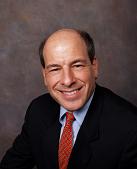 Steven Wertheim, MD, is a board-certified orthopedic surgeon and sports medicine physician with Resurgens Orthopaedics, based in Marietta, Ga. Dr. Wertheim focuses on sports medicine and knee, shoulder and elbow injuries. He earned his medical degree from Case Western Reserve University in Cleveland and completed his residency at University Hospitals of Cleveland. Dr. Wertheim completed his sports medicine fellowship at the University of Pennsylvania in Philadelphia.
Steven Wertheim, MD, is a board-certified orthopedic surgeon and sports medicine physician with Resurgens Orthopaedics, based in Marietta, Ga. Dr. Wertheim focuses on sports medicine and knee, shoulder and elbow injuries. He earned his medical degree from Case Western Reserve University in Cleveland and completed his residency at University Hospitals of Cleveland. Dr. Wertheim completed his sports medicine fellowship at the University of Pennsylvania in Philadelphia.
Here he discusses current research trends in sports medicine, the need to practice evidence-based medicine and the advent of bundled payments.
Q: What are the biggest clinical and research related issues currently shaping orthopedic sports medicine?
Dr. Steven Wertheim: Sports medicine is a rapidly evolving field with continued changes on the research and clinical side. There are a lot of areas of research, but probably the most significant are in injury prevention (i.e. concussions, female ACL tears) and cell-based treatments to enhance cartilage repair, such as tissue engineered products or use of stem cells to treat cartilage lesions. Also, the role of PRP in orthopedics is an exciting field with a lot of potential.
Q: What are the biggest business issues affecting the field?
SW: From the business side, we must, like other areas of medicine, show that the treatments we do work and are cost effective. There has been lots of work done in the lab and in early clinical studies on double row rotator cuff repair, and double bundle ACL reconstruction. These procedures cost more than single row or single bundle ACL reconstructions, and we must show that they are better clinically or we are wasting healthcare dollars that could be spent elsewhere. The same is true with things such as viscosupplementation and PRP injections. These are expensive technologies, yet we are not sure they really are better than placebo. We have to think of the cost in addition to the benefit, something that is not taught in residency or something most sports medicine docs think of when treating someone.
Q: How do you think the approach to treating athletes will change over the next few years?
SW: We are very good at treating athletic injuries; we are not as good at preventing them or keeping these injuries from causing long-term problems for the athlete. We have seen the data on concussions and their long term effect, and we know athletes have a higher incidence of degenerative disease later in life than the normal population. We need to understand why and see if there are treatment strategies that can alter the natural history of these injuries. Preventative medicine is the next great area for us to make a difference in the lives of athletes.
Q: How will bundled payments affect sports medicine?
SW: Bundled payments are coming and we need to be ready for them. One advantage we have is that the whole treatment course of many sports injuries, such as ACL tears or rotator cuff tears, is something that orthopedic surgeons have dealt with for a long time. The evaluation, x-rays, MRIs, surgery in an ASC and physical therapy are parts of many sports medicine practices. We have the data from a cost standpoint, but have never thought of it from the standpoint of containing costs. We have to think in terms of cost and necessity--can the patient get the same result with an implant that is less expensive, or with less formal PT and more home exercises? Is the MRI really necessary? This is a whole new way of looking at things, but we all agree the cost curve of medicine is unsustainable and unless we take action for ourselves others will be making these decisions for us, which will be bad for everyone.
More Articles on Sports Medicine:
Establishing an Orthopedic Education & Research Program at Hoag Orthopedic Institute: Q&A With Dr. Michael Patzakis
Dr. Geoffrey Westrich: 4 Points on Hip & Knee Revision Surgery
Improving Quality of Life & Understanding the Changes Ahead in Orthopedics: Q&A With Dr. David Mack of North Cypress Sports Medicine Center


